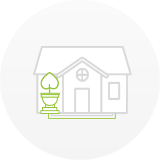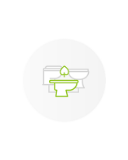Sun-Mar™ Installation Overview
Installing a Sun-Mar™ Composting Toilet Considerations
A brief overview Please refer to your system manuals for comprehensive instructions.
To down load your system manual please login to see your system and corresponding documents.
What Comes with the Toilet?
The Sun-Mar™ systems come as a complete package ready for installation as per the prices quoted on this site. You will receive every component you need to complete the installation.
Who can Install and the Tools Required?
If the toilet is to be installed in Australia or New Zealand as part of a building application with council approval a plumber is generally required to sign off on the installation. If you don't have a plumber or builder in mind we can also recommend one who has experience with our Nature Loo systems.
That said, our waterless toilets can be installed in half a day by anyone who has access to the tools listed below. So, if you aren't seeking council's approval of the system then simply follow the DIY instruction manual for the composting toilets and greywater system.
Tools and material required:
• Phillips & Flathead screwdriver
• Electric drill with a hole saw bit
• Jigsaw
• Wire cutters
• PVC non-pressure pipe glue
• Silicone
• Shovel (for bathtub sized absorption trench)
For all Sun-Mar models, 240v and 12v models, you do not need an electrician for the installation itself. However, if you are using mains power to run the fan you will need to ensure a power point is located near the ventilation pipe. If the fan is to be solar powered, then follow the instructions in the manual on connection to the solar regulator.
Placement of the Toilet Pedestal
Sun-Mar™ "split" systems (e.g. the Centrex range)
The Sun-Mar™ Centrex split systems require a clear space below the bathroom floor or a lower level to the side of the house to where the compost treatment chamber can be located.
A 500ml micro-flush pedestal option is available where multiple toilets can be connected to a single Centrex unit. The compost Bio-drum/chamber does not need to be directly beneath the pedestals. The chamber can be located to the side of the house as long as the waste pipe is angled down and gravity can move the waste along the pipe. This allows more flexibility with the location of the compost chamber and toilet pedestals.
The composting chamber should be installed on the north side of a home to maximize exposure to direct sunlight. The Centrex should be positioned on a levelled concrete slab with a slight lean to the liquid drain outlet. You will need to have access to the compost treatment chamber to add bulking mix and rotate the drum.
Sun-Mar™ "self-contained" systems (e.g. the Excel range & Compact)
Self-contained units are very compact with the Bio-drum compost treatment chamber held inside the toilet pedestal. The handle to rotate the compost chamber and finishing tray where the treated compost is removed are hidden in the front of the unit (see maintenance for more details). The capacity of these systems is reduced compared with split systems but they can be installed directly on the floor.
The 240-volt models come with a heater and powerful 35-watt fan that can evaporate all liquid if continuous power can be guaranteed and the recommended number of users is not exceeded. These systems can be installed in rooms that do not have access to the outside. However, an emergency liquid drain connection is recommended.
Ventilation System
As with all composting toilets, the heart of the system is the 12 or 240-volt fan which runs the Ventilation System 24 hours a day to continuously circulate air through the compost heap.
The air is drawn down through the toilet pedestal through the compost chamber and out of the vent pipe. This set-up ensures that no odours enter the toilet room.
Vent pipe (4") and connections are provided. Further lengths can be supplied should you not have sufficient pipe to extend at least 600mm above the highest point of your roof.
Using Mains Power (Suite for Headed and Non-Headed systems
- 240-volt models: New Zealand pin plug is provided that can be connected to a mains power point
- 12-volt models: 240/12 volt regulated transformer, extension wire, and connectors are all included as standard to run the fan from mains power.
Using Solar Power Supply
Using dedicated Solar Kit To Run The System
- 240-volt models: You will require a solar system large enough to power the system for up to 7 days. The headed systems will very in the relative climates their power consumption to maintain the required temperature so as it gets colder the systems will use more power. The 240 models will use on average 2kw; your solar system will need about 1kw of panels and battery’s large enough to serve up to 7 days without sun. Note due to the cost of this setup it is not recommend, refer to “Using Your Existing Solar Power To Run The System”
- 12-volt models: Running a fan on a dedicated solar power supply is ideal.
You will need and 80w panel, controller and a small battery 60 – 100 amp hour battery will cover the systems needs for up to 7 days. If you are build a standalone building consider a kit that will run the lighting as well.
Using Your Existing Solar Power To Run The System
Keep in mind that like any appliance it is important to calculate the daily use of power required and to add (scale) this on to your existing power demands.
- 240-volt models: Scaling up and existing power supply system is the only time it is consider cost effective to run heated composting systems. Consider that the 240 models will use on average 2kw; your solar system will need about 1kw of panels and to scale both your battery bank and 240v inverter supply to match your peak power draw.
- 12/24-volt model: If your house is powered by solar, you will have a battery bank that will generally be either 12-volt or 24-volt DC.
- 12-volt system; just connect the battery directly to the fan. Don’t forget to put a 0.5-amp fuse in line with the fan.
- 24-volt system; ask us for a 24-volt fan which will allow you to run the fan directly from your 24-volt battery bank.
The fan will use about 6 amp-hours of power on a 12-volt system.
If you have an inverter, don’t use it to power just a fan. The inverter will run and average with a 10% inefficiently when it is powering only the small fan and you will waste a lot of precious power. It may even flatten your batteries long term.
Excess Liquid Absorption Trench
The liquid discharge connection must be permanently connected to a small absorption trench as depicted below. This is the standard requirement as per AS/NZS 1546.2.
All models are supplied with a length of flexible 25mm drain hose. You may need to buy a length of 50mm PVC pipe to connect the hose to the slotted ag pipe in the absorption trench. The length will depend on where you choose to put the trench.














